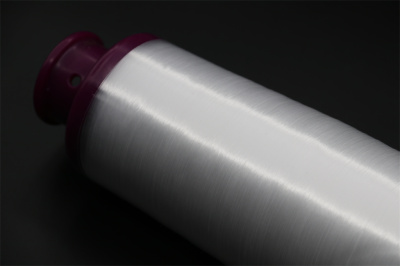
The Future of Offshore Wind Turbines: Embracing Carbon Fiber Veil Technology
2024-06-05 09:55
At the recent "China Offshore Wind Power Engineering Technology Conference," a keynote speech was delivered by the offshore product line general manager. He emphasized that the current bottlenecks in China's offshore wind turbines lie in the blades and main bearings. Given the high demand for offshore wind turbines, it is crucial for manufacturers to focus on providing solutions that ensure investment returns based on available supply chains, thus supporting the sustainable development of offshore wind power in China.
Development Journey of Wind Turbine Blades
The evolution of wind turbine blades in Europe and China was reviewed. Between 1991 and 2015, China was a follower in terms of turbine power and blade size. However, by 2017, China had developed a wind turbine with a diameter of 171 meters, surpassing Europe's 164 meters. By 2019, both Europe and the U.S. introduced even larger turbines with a diameter of 220 meters. This parity in turbine size signifies that China and Europe are now on a similar level in offshore wind turbine development.
Challenges and Innovations in Wind Energy
According to a renowned global science magazine, as offshore wind turbines increase in size, the wind energy sector faces significant challenges in aerodynamics, structural dynamics, and hydrodynamics. The research in these fundamental scientific areas has not kept pace with the growing turbine diameters. In contrast to the aviation industry, which has not seen aircraft wingspans exceed 80 meters even after a century, the wind power industry, in less than four decades, has reached turbine diameters of 200 meters.
The importance of gradual progress in engineering and technological advancements was highlighted. Increasing blade length requires breakthroughs in materials and manufacturing technologies. Relying solely on existing technologies to increase blade size is insufficient to support the further development of offshore wind power.
The Need for Carbon Fiber Veil Materials
To support longer offshore blades, the industry must venture into the "uncharted territory" of Carbon Fiber Veil materials. This transition mirrors the situation a decade ago when China had to license blade designs from European companies, with core materials and equipment sourced from German or Japanese companies. Large mold investments, lengthy timelines, and immature process technologies further complicate the development, making the processing efficiency of oversized blades significantly lower than that of mainstream blades by 3-4 times. This presents a major bottleneck in ensuring project viability under current large-scale offshore wind installation scenarios in China. Carbon Fiber Veil is essential for the next generation of wind turbines, addressing both the need for strength and lightweight properties.
Challenges in Main Bearing Supply Chain
The main bearing is another bottleneck, stemming from design challenges, supply chain issues, and installation complexities. Specifically, the supply chain for large offshore turbine main bearings faces three key challenges:
The diameter of the main bearing ring often exceeds 2 meters, surpassing the capacity of most available machine tools.
There are only two mainstream suppliers, requiring capacity reservations at least a year in advance.
Domestic suppliers currently lack the design and processing capabilities for such large bearings.
Solutions and Innovations in Bearing Technology
The adoption of dual SRB technology for main bearing configurations ensures support for 5-6 MW turbines with a diameter within 1.5 meters. This solution, backed by a robust global supply chain, allows for local supplier involvement in design and production. In contrast, technologies requiring larger diameters, such as dual TRB and DRTRB, face significant capacity and efficiency challenges.
Optimizing Offshore Wind Turbine Performance
Despite the challenges, the company remains confident in providing offshore wind solutions that yield positive investment returns. A comprehensive map of the levelized cost of energy (LCOE) for China's offshore wind farms was created, guiding turbine definition and helping developers identify profitable projects. The focus is not on turbine capacity but on LCOE, with power generation being the most critical factor.
Regional Adaptations and LCOE Sensitivity Analysis
Different regions require varying combinations of turbine power and rotor diameter to optimize LCOE. The company conducted LCOE sensitivity analyses for high-wind areas like Fujian, low-wind areas like Guangxi, and mid-low-wind areas like Zhejiang. Findings indicate that 6-8 MW turbines are optimal for high-wind scenarios, while 4-6 MW turbines are best for low to mid-low-wind scenarios. Lower wind speeds necessitate larger rotor diameters and vice versa. The use of Carbon Fiber Veil in these turbines is crucial for achieving the desired performance and efficiency.
Addressing Wake Losses in Offshore Wind Farms
China's offshore wind farms face greater wake losses than European counterparts due to denser layouts, lower wind speeds, and more stable atmospheres. An evaluation of nearly 1.5 GW of offshore turbine capacity revealed that initial estimates of wake losses were about 2% too low. Efforts to reduce wake losses through group wake control technology have resulted in a 3-4% increase in power generation. As offshore wind farm layouts become denser, the value of group wake control technology becomes increasingly significant. Implementing Carbon Fiber Veil in blade design not only enhances performance but also mitigates the impact of wake losses.








